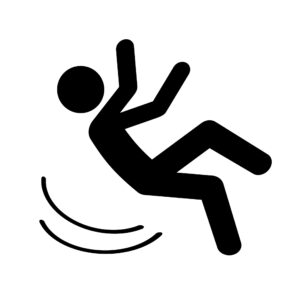Claims For A Fall From A Height – Scotland Guide
In this guide, we’ll be discussing when fall from height claims could be made for injuries caused by negligence in Scotland. In order to claim, you will need to show that you were harmed by a breach of duty of care.

Fall from height claims guide
Further down in this guide, we’ll be discussing the duty of care that is owed to you in various different situations. We will also look at how a breach of this could happen, causing an accident that leads to a personal injury claim.
If you’d like to discuss your personal injury claim further or want to see if you have a valid case, then you can do so by using the contact details provided below. If one of our advisors feels your claim is valid, they could put you in contact with a No Win No Fee solicitor to work on your claim.
You can contact us by:
- Filling out your details in the contact us section of our website
- Calling us with the number at the top of this page
- Using the live support feature in the corner of our website
Browse Our Guide
- Eligibility Criteria When Making Fall From Height Claims
- Fall From Height Claims – Examples Of Negligence
- How Much Compensation Could You Recieve For Fall From Height Injuries?
- Evidence That Could Help You Make A Fall From Height Claim
- You Could Make A Personal Injury Claim Using No Win No Fee Solicitors
- Learn More About Claiming Compensation For A Fall
Eligibility Criteria When Making Fall From Height Claims
When making fall from height claims, it’s important to be able to prove that your injuries were caused as a result of third-party negligence. This means that the third party in question needs to have:
- Had a duty of care to you
- Breached their duty of care in their actions or inactions
- Caused or contributed to your injury because they breached their duty of care.
You also need to ensure that your claim starts within the relevant time limit. Generally, the time limit is three years from when the incident occurred. However, exceptions can apply to this time limit. Speak with our team today to see if this is the case for you.
Fall From Height Claims – Examples Of Negligence
Below, we have included some examples of how the duty of care you’re owed could be breached in a way that causes you harm. However, if you have any questions, then please don’t hesitate to get in touch.
Accidents At Work
According to the Health and Safety at Work etc. Act 1974, an employer needs to take all steps considered reasonable and practicable to prevent their employees from harm. This piece of legislation sets out the duty of care that employees owe those who work for them; however, there are other laws that set out the reasonable and practicable steps that employers should take. For example, the Provision and Use of Work Equipment Regulations 1998 sets out the need for equipment to be maintained in good working order.
Some examples of when you may be able to make a successful accident at work claim include:
- Your employer provides you with a faulty ladder that you use in the workplace. One of the rungs breaks, causing you to fall from a height and suffer a head injury when you land.
- You’re working at a height in a factory on a movable platform. This malfunctions and lurches, causing you to be thrown from it. As you land, you break your elbow and wrist.
Public Place Accidents
Those in control of public spaces also have a duty of care to every member of the public that uses their facilities. This means that they have to ensure the reasonable safety of anyone who utilises the space for the intended purpose. This is outlined in the Occupiers’ Liability (Scotland) Act 1960
Some examples of public place accidents could include:
- An occupier fails to provide regular maintenance to a railing, resulting in a member of the public falling from a height and injuring themselves,
- An occupier failing to mark a slippery surface in sufficient time, resulting in a member of the public slipping and falling from the top of a set of stairs. As a result, they land on a radiator at the bottom and suffer burn injuries.
How Much Compensation Could You Recieve For Fall From Height Injuries?
In successful fall from height claims, up to two separate heads of claim could be awarded. The first that we’ll discuss is solatium damages.
This head of claim aims to compensate for the suffering and pain caused by your injuries. The figures below have been taken from the Judicial College Guidelines from Judiciary UK, which is a document used by solicitors to assign a value to the solatium damages portion of your claim.
Whilst this is the case, it’s important to recognise that these figures cannot be guaranteed. This is due to the various factors that go into determining this head of a successful claim.
Judicial College Guideline Entries
| Injury | Severity | Compensation | Notes |
|---|---|---|---|
| Brain and Head Injury | Very Severe (a) | £282,010 to £403,990 | Cases involving little evidence of ability to follow basic commands, person will need full time nursing care. |
| Neck Injuries | Severe (a) (i) | In the region of £148,330 | Neck injury associated with incomplete paraplegia. Despite person wearing a collar for 24 hours a day, there will be little to no movement in the neck. |
| Neck Injuries | Moderate (b) (i) | £24,990 to £38,490 | Injuries that involve fractures or dislocations that may necessitate spinal fusion. |
| Back Injuries | Severe (a) (i) | £91,090 to £160,980 | Cases involving damage to the spinal cord and nerve roots. which will result in incomplete paralysis. |
| Leg Injuries | Very Serious (b) (ii) | £54,830 to £87,890 | Injuries that lead to permanent issues with moving around. The person will need mobility equipment for the rest of their life. |
| Knee Injuries | Severe (a) (ii) | £52,120 to £69,730 | Leg fracture causing pain which is constant, movement will be limited and person will be prone to future arthritis. |
| Ankle Injuries | Moderate (c) | £13,740 to £26,590 | Fractures and tears that result in less serious disabilities involving issues walking or standing for long periods of time. |
| Arm Injuries | Simple fractures of the Forearm (d) | £6,610 to £19,200 | Simple fractures of the forearm |
| Injuries to the Elbow | Moderate or Minor Injury (c) | Up to £12,590 | Injuries involving most elbow injuries. Compensation due will depend on lasting disability. |
| Wrist Injury | (f) Very Minor | £3,530 to £4,740 | Very minor fractures and soft tissue injuries resulting in the application of a bandage or plaster. Full recovery is expected within 12 months. |
You could also receive patrimonial damages. This head of claim aims to compensate you for any financial losses you incur, for example:
- Loss of earnings
- Care costs
- The cost of medical treatment
You should provide proof, like receipts and invoices, to show the money you have spent. Read on for information on some other pieces of evidence you could use to support a claim.
Evidence That Could Help You Make A Fall From Height Claim
In order to prove that your injury was caused by third-party negligence, you’ll have to provide evidence. You can also use evidence to show the extent to which you were affected by your injuries.
Below are some types of evidence that could help in fall from height claims:
- CCTV footage of the accident
- A diary of your treatment and symptoms you experience as a result of your injury
- Getting medical care and asking for copies of any records produced
- Taking photographs of your injury and the accident site
- Taking contact details of any witnesses of your accident.
Speak with a member of our team today for guidance. If you do have a valid claim, they could connect you with a No Win No Fee solicitor from our panel.
You Could Make A Personal Injury Claim Using No Win No Fee Solicitors
Providing you have a valid claim, you may be able to make your personal injury claim with our panel of solicitors. You’ll be working under a type of No Win No Fee agreement called a Conditional Fee Agreement (CFA) which comes with a variety of benefits which are outlined in the Conditional Fees Agreements Order 2013.
The first of these is that you generally won’t be expected to pay any upfront, or ongoing fees for your legal representation; as well as this, usually, you won’t have to pay anything at all for the work your lawyer has done in the case that you’re unsuccessful in your claim.
If you receive compensation, then your lawyer will take a legally-capped percentage of your settlement before it reaches you. The legal cap stops you from being overcharged.
If you’d like to see whether you could be provided with legal representation, or simply have more questions about the personal injury claims process, you can use the following information to talk with our team of advisors further.
- Fill out your details in the contact us section of our website
- Call us using the number at the top of this page
- Use the live support feature in the corner of our website to chat with someone directly
Learn More About Claiming Compensation For A Fall
Thank you for reading our guide on fall from height claims. Use the following links to find out more:
- Statutory Sick Pay (SSP)
- Royal Society of the Prevention of Accidents (RoSPA)
- NHS Scot – Guide to sprains and strains
Writer Louis Poynter
Publisher Fern Slow

